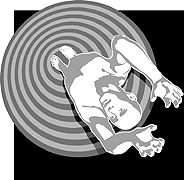kaleidoscope
Peggy Greene:
A role among the reels
 Peggy Greene
PHOTO: OWEN EGAN
Peggy Greene
PHOTO: OWEN EGAN
| |
Oddly enough, Peggy Greene does not describe herself as a film buff, even though her job is to buy films for the Instructional Communications Centre, better known as ICC.
Reading is her passion. "If I can sit down and read, I'm the happiest person," says the manager of film acquisitions and sales.
Greene might, however, be watching one of the dozens of films she previews for the "red"(feature film) collection as she turns the pages of her book.
"I can't just watch TV. I get too bored," says the slight and elegant Greene. "I have to be ironing, reading or playing with the Gameboy at the same time. I'm a hyper person; I have to keep moving. Unless they're very well done, films don't keep my attention."
Among the films that, in Greene's view, fit that description are those of American directors Spike Lee and Martin Scorcese as well as the Disney animated films. The Sound of Music is her all-time favourite — "but I think it's kind of fluffy" — along with Spike Lee's Get on the Bus.
"Instead of all those millions of [African-American] men doing the Million Man March, they should have watched this film," she jibes.
Greene has been with ICC since 1984 and at McGill since 1977, when she began as production co-ordinator in the old Information and Publications Office (which became the University Relations Office).
She is a relative newcomer to the film side of things. It was only five years ago, when the part-time position dedicated to the film collection was cut, that Greene found herself having to learn the business, as well as continue her work as office manager and coordinator of graphic production.
"I knew nothing about film distribution," says Greene turning up a portable heater, which helps ease the pain of her arthritis. "It was a challenge," says Greene, crediting her boss, ICC director John Roston, and her predecessor, Carole Grossman, for their help.
Finding a film that a professor or student has requested can be a challenge. Greene recalls searching and searching, to no avail, for the distributor of The Times of Harvey Milk. As it turned out, the title was The Life and Times of Harvey Milk.
"You can find it, we know you can find it,' they'll say to me," she jokes. And she does, though occasionally she has to break the bad news that the film has no Canadian rights.
Greene, in consultation with professors and students, makes her choice of film according to what's deemed relevant for film studies courses or what documentaries (the "green" collection) are needed for particular courses. All films are available to the McGill community at a charge of two dollars. Current favourites are Life is Beautiful and Armageddon, reports AV coordinator Jerry Rohar, while I, Claudius is the top documentary choice.
Occasionally, film choices made for the red collection have been questioned. "Some say McGill shouldn't be in competition with video stores," says Greene. "But you have to have Disney, for instance, because animation is a big part of film education. The Disneys are classics and I try to collect the classics as much as possible."
Madame X was Greene's favourite movie from childhood and is part of her 50-video collection that features mostly tales from history. As a child, she watched movies mostly on the TV screen. "We were six children, so there was no money for going to the cinema," says Greene, the baby of the family, who was born in Sydney, Nova Scotia, and moved at age four to Montreal where her father, a trumpet-player, had found work.
Anita Cotic, an occasional at ICC for the past five years, has appreciated Greene's advice on many occasions. "Peggy's half older sister, half Mom to me," says Cotic, a transplant from Toronto who has sought Greene's advice on such practical matters as landlord woes as well as problems of the heart.
"She's very funny and fun-loving. I find her a really good role-model for me."
After hours, Greene "crashes" at the home in Brossard that she shares with her husband, ICC's assistant producer/director of television, Carmelo Sgro, her dog Spike and, at last count, 40 pairs of shoes. "Carm has put me on a shoe diet since we bought the new house," laughs Greene, an admitted shoe and fashion collector.
 |
||||
|
Arthur C. Clarke was totally right in 2001: a Space Odyssey. We now have computers that play chess, computers that read lips. The only thing we don't have are computers with emotional complexity. |
||||
Facing their fears
 ILLUSTRATION: TZIGANE
ILLUSTRATION: TZIGANE
| |
Magnetic Resonance Imaging has become a powerful tool in the arsenal that physicians use to find out what's going on inside their patients.
But the MRI scans also pose a problem — 10 to 15 per cent of patients who undergo MRI scans experience panic attacks that can lead to heightened claustrophobia afterwards. Another one to two per cent of patients just can't endure being in the MRI machine and bail out during the scans.
"There is a three- to four-month waiting list for patients to have access to these machines and it's an expensive procedure," notes psychiatry professor Michael Spevack. "The results are useless unless people complete the scans."
But completing them can be a real struggle for some patients, says Spevack, who did a study on panic attacks and MRI. The tests last for 45 minutes to an hour, during which time patients must lie completely still as much of their body is inside a narrow metallic tunnel.
"Most people have never been in as claustrophobic an atmosphere as that."
Spevack discovered that patients aren't always able to predict whether they'll have problems with the MRI scan beforehand. "They think they'll be okay, then they see the machine and they say, 'Me? In that?'"
Some wonder if all patients should be sedated before MRI scans — as children are. "That's kind of a waste if most people are able to cope," says Spevack. He has come up with some factors that seem to help people come to grips with their fears. "Teaching simple relaxation techniques helps. Raising people's awareness about how important the procedure is — how it plays a vital role in doctors being able to treat them — makes a real difference."
 |
||||
|
Unfortunately, we cannot promise anybody that the drug cocktails that are currently in use are going to work forever. |
||||
Gifts to be wary of

| |
Do doctors favour drug companies that treat them to gifts, free meals and travel subsidies? Does it affect the types of choices they make when they fill out prescriptions?
Most physicians think they're able to resist the overtures of the pharmaceutical firms that spend a whopping $8,000 to $13,000 on trying to sway each doctor each year, but psychiatry resident Ashley Wazana isn't so sure. "Physicians are human; they can be influenced," Wazana told USA Today.
He recently published a paper in the Journal of the American Medical Association that examined 29 previous studies about the effects of drug company's sales practices.
He notes, "One study found that 85 per cent of medical students believe it is improper for politicians to accept a gift, whereas only 46 per cent found it improper for themselves to accept a gift of similar value from a pharmaceutical company."
Wazana adds, "Physician interactions with pharmaceutical representatives were generally endorsed, began in medical school, and continued at a rate of about four times per month."
Wazana concludes that doctors are affected by the drug company's pitches and gifts, to the point that they make "non-rational" choices about prescriptions — opting for more expensive drugs than their patients require.
Most physicians and medical residents indicate that they are wary in their interactions with drug company salespeople. They also believe such interactions are necessary — part of their jobs is to know about the drugs that are available, after all.
But they also acknowledge that free meals and travel subsidies play a large role in whether they'll turn up at an event promoting drug companies' products.

